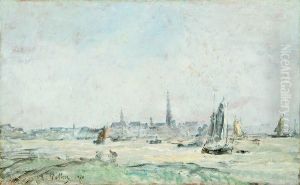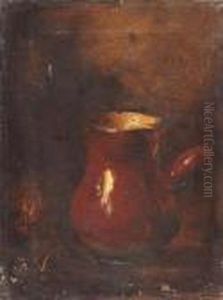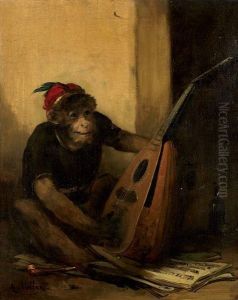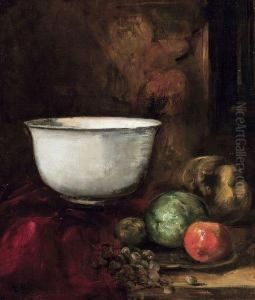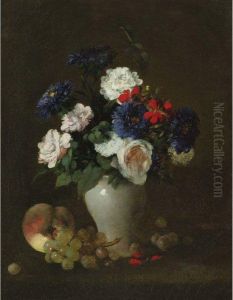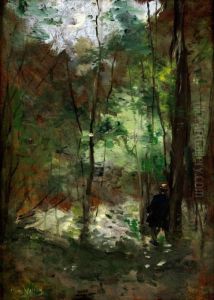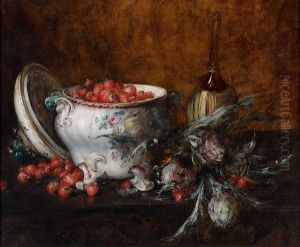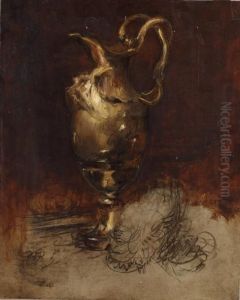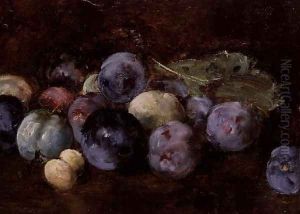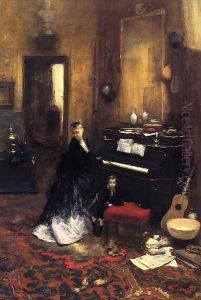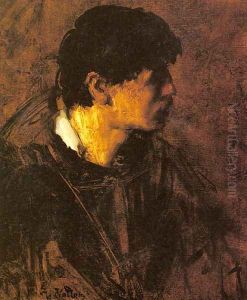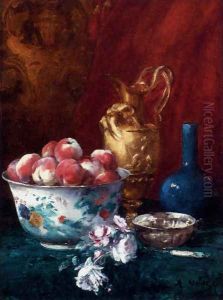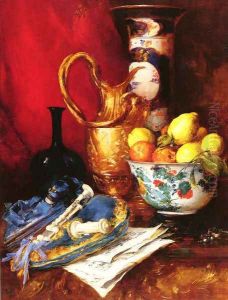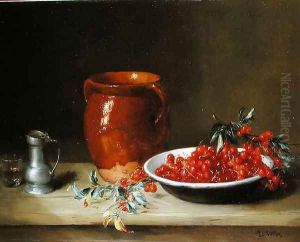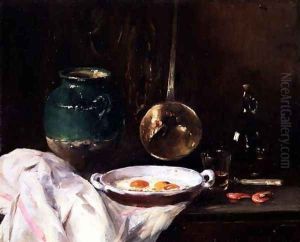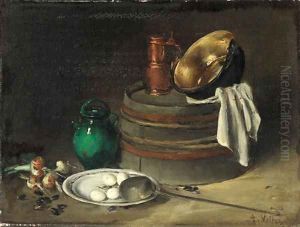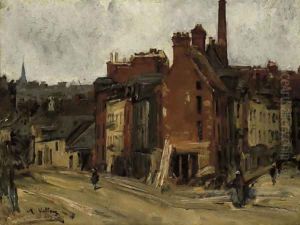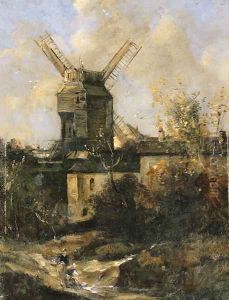Antoine Vollon Paintings
Antoine Vollon was a French painter associated with the Realist movement, born on April 23, 1833, in Lyon, France. He was known for his still lifes, landscapes, and portraits, capturing the essence of the 19th-century French bourgeoisie's life and the beauty of everyday objects with a rich, vibrant palette.
Vollon began his artistic education at the École nationale supérieure des beaux-arts de Lyon before moving to Paris in 1859, where he continued his studies. His early work reflected the influence of the old masters, particularly in his attention to detail and use of color. His talent was recognized early on, and he received numerous medals for his work, including at the Paris Salon, where he exhibited regularly.
Over the years, Vollon developed a distinctive style that combined the precision of Realism with a sense of atmosphere that bordered on Impressionism. He was particularly admired for his ability to render textures in his still-life paintings, such as the glint of metal, the smoothness of porcelain, or the richness of tapestry. His works often contained an array of objects that reflected his fascination with material culture and the aesthetics of accumulation.
Vollon was also an accomplished portraitist who painted several notable figures of his time. Beyond his artistic pursuits, he served as a mentor to younger artists, including his son, Alexis Vollon, who also became a painter.
Antoine Vollon's work was celebrated in his lifetime and continues to be appreciated for its contribution to the transition between traditional Realism and the emerging Impressionist movement. Despite the changes in artistic tastes and styles over time, Vollon's work has maintained a respected place in French art history. He passed away on August 27, 1900, in Paris, leaving behind a legacy of work that is still studied and admired today.

